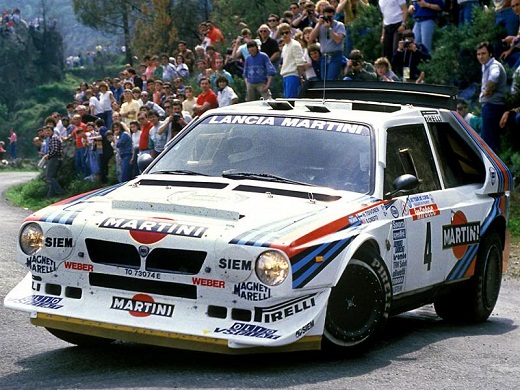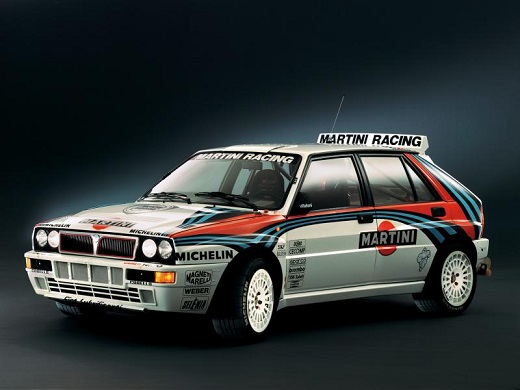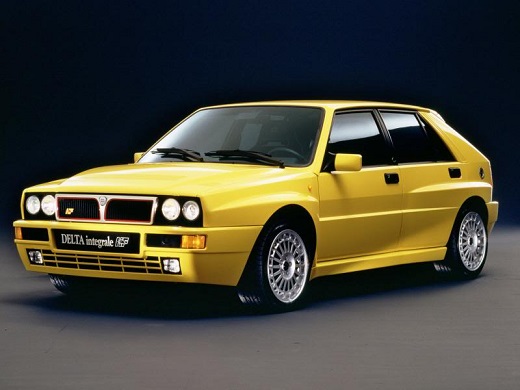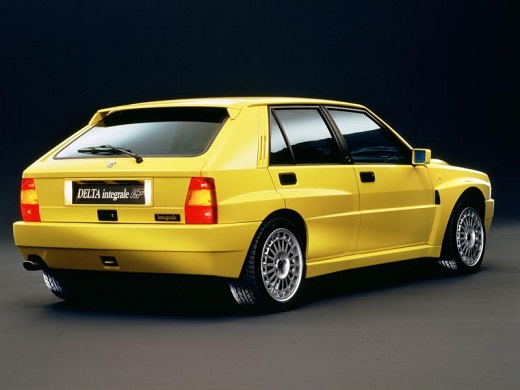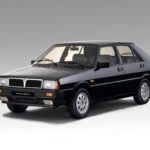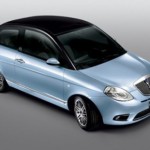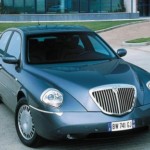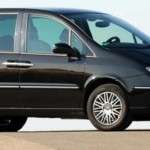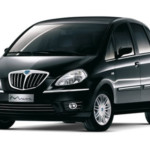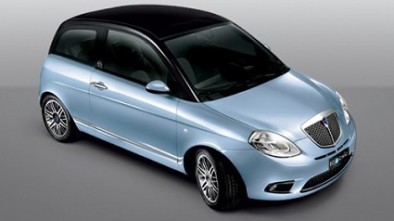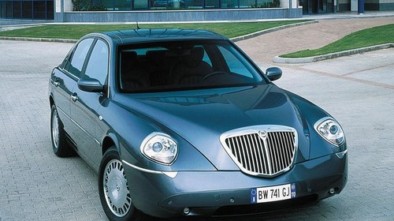Lancia Delta 1979 - 1994 - Model history
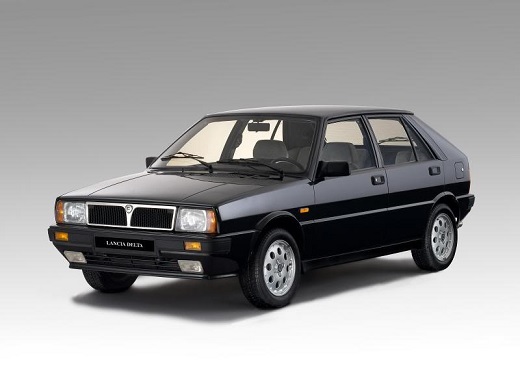
Lancia Delta
Lancia Delta - Favorite by the audience, hated by the competition, but still one of the most respected car models of our time.
Dear reader, In front of you is the story of an ordinary car and its naughty twin. This is the story of the tame Delta Chain and the Wild Chain Delta Integrale, their ups and downs, as well as the little things that made this car legendary. Lancia is a car brand with a long tradition of producing cars with a discrete note of luxury. Until the download by Fiat, Lancia enjoyed a good reputation and her models were well known around the world. The period from 1969 to 1979 represents probably one of the most difficult in Lancia's history. Stratos, Gamma and Beta, the last representatives of one period, had decent looks and performance but were far from perfect. Poor workmanship, low reliability, poor to no corrosion protection (famous Russian steel) and poor service support have led to a dramatic decline in sales. For some time it was even said that Lancia would cease to exist because of all the problems.
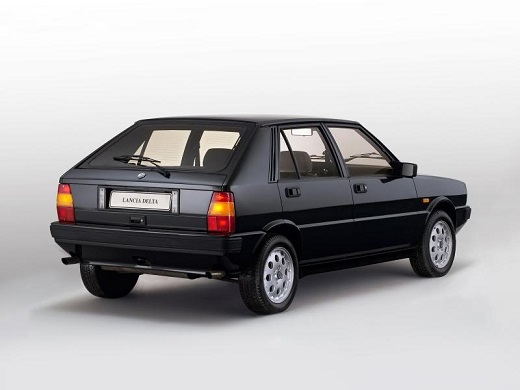
Lancia Delta
Fortunately, that did not happen. Work on a completely new model, codenamed (Progetto - project) 831, began back in 1975. The fluttering lines of previous Lancia models have given way to far more conservative ones, and Giorgetto Giugiaro has created a model based on the Fiat Ritmo model with design features similar to those seen on Volkswagen’s Golf and Scirocco models. The first sketches showed a wide and strictly angular body (3,895 x 1,621 x 1,364 mm), with more interior space than the Golf. An interesting detail, very widespread today, was applied for the first time on a single Chain. From the very beginning, the Lancia Delta was designed with bumpers integrated into the body, in the color of the vehicle. The original solution of the rear light group implied a horizontal position (as with the Scirocco), but due to the practicality and increase in the trunk opening, a more original solution with vertical lights was still applied. Testing of prototypes on various tracks was done in tours of 10,000 kilometers, and the tours themselves were divided into separate stages: 3,800 km on dirt roads, 2,800 km on cobblestones, while the rest was intended for asphalt roads.
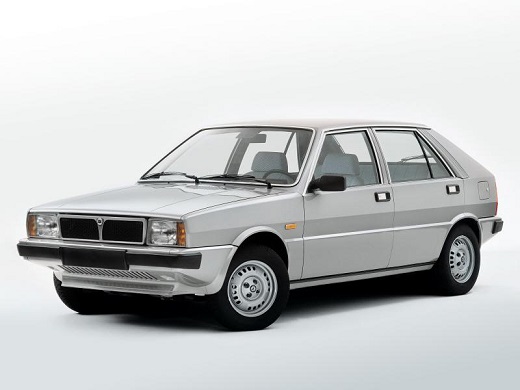
Lancia Delta
Intensive tests included heating and ventilation systems to offer Lancia Delta customers in as many climates as possible. The body, due to its size and appearance, required a solid construction, which meant that when assembled the parts would merge into 4,247 welding and fixing points, as much as 1,000 more than the Rhythm. The softer and safer interior materials made it possible to create more complex shapes, with particular emphasis on first-class ride comfort. 1979 Shah Reza Pahlavi was ousted, the Soviet Union invading Afghanistan, Lancia Delta premiered at the Frankfurt Motor Show. The reactions of the specialized journalists were favorable, and the result of the work of the whole team on the Delta project was awarded in the form of the title Car of the Year 1980, ahead of Opel Cadet and Peugeot 505.
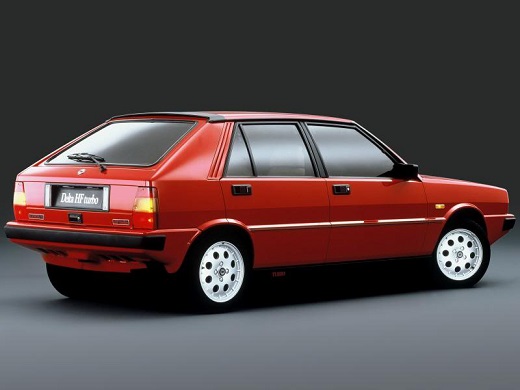
Lancia Delta
At the beginning of the sale, Lancia offered customers gasoline in two versions. The weaker engine had 1.3L and 75 hp, power was transmitted to the front wheels via a four-speed manual transmission, and customers were offered a five-speed transmission for an extra charge. The more powerful 1.5L and 85hp petrol powered the more luxurious Delta. Continued production brings interesting new developments regarding the plant. The LX (luxury) and GT (sport) versions fitted with 1.6hp 105L petrol were originally presented to the public Fiat Rhythm 105TC. The evolution of this engine in the GT ie version brought a slight increase in power, to 108 hp, and the later Kat version reduced the power to 90 hp. The next big step was the Turin Motor Show in 1982, where Lancia showed for the first time the direction in which Delta will move for the next ten years. Visitors were shown the Turbo 4 × 4 version, with a 130 hp engine. It took another year for the fair version to be included in the official offer under the name Lancia Delta HF Turbo, albeit without an integral drive.
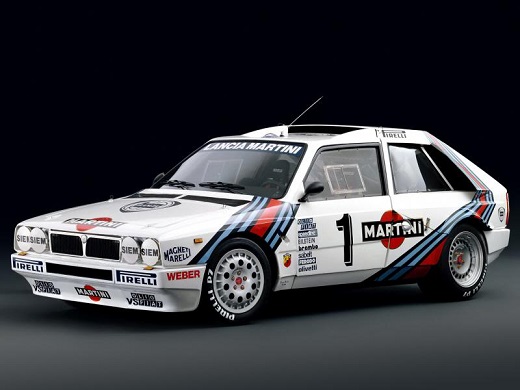
Lancia Delta
The Garrett T3 turbocharger gave this version a top speed of 190 km / h, giving the owner of this model a starting advantage at every traffic light. From late 1982 until 1989, based on the Delta model, Lancia produces a classic three-volume sedan called Prisma. The sedan may not have had a significant historical role, but with 317,378 specimens produced, it helped the Lancia business well. The unique Prisma was once made for Fiat's owner, Giovanni Agnelli, and is a 2.0 turbo 8v integral, complete with leather interior, power windows and air conditioning. Avvocato Agnelli used this car until 1988, when a replacement came in the form of a Thema. Until the mid-1980s, there were no major changes to the Delta bodywork. It is included in the offer automatic transmission, and in 1985 a limited edition of only 200 copies of the S4 appeared. In an effort to meet the standards for participating in Group B of the World Rally Championships, Lancia has produced a smaller series of road legal athletes.
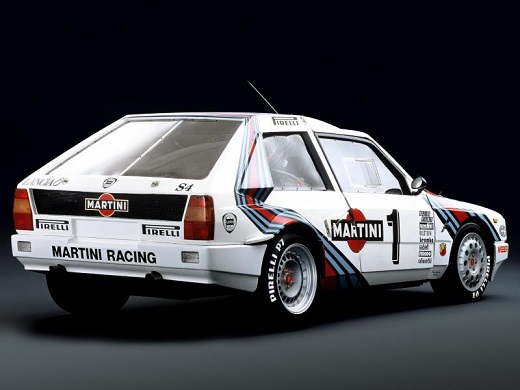
Lancia Delta
The Lancia Delta S4 Stradale only shared the look of the previous model, everything else including the engine was custom made. The rear-engine engine developed 1.8hp from the 250L, much less than the 400hp rally version. Just one month after receiving competition approval, the Lancia Delta S4 wins the first two places in the RAC Rally. Delta experienced its first major beautification in 1986. Some changes were made to the bodywork, especially in the bumper area, while the interior with the redesigned dashboard became more comfortable. The 1.3L and 1.5L gasoline units are fitted with new carburetors, the 1600 GT version comes with a fuel injection and electronic ignition system, and a turbo diesel engine - 1.9L and 80 hp - is included. The HF Turbo version also comes with a fuel injection system, with engine power increasing to 140 hp. For the Greek market only, 1.1L and 64 hp gasoline is on offer. The most significant novelty for 1987 is the introduction of the HF 4WD version of the Delta, powered by a two-liter 165hp engine.
The version with integral drive got double round headlights, which will later become a trademark of all versions with this system of power distribution on wheels. The heart of Delta's integral drive consists of three differentials, and the power is distributed between the axles in a ratio of 56:44, via a central Ferguson viscous clutch. The real power is hidden on the rear axle, in the Torsen differential, which distributes the torque between the rear wheels, according to the condition of the road and the possibility of wheel grip. Next year, instead of the 4WD version, the Lancia Delta Integrale 8v will be released, with 185 hp and 304 Nm of torque. The car is equipped with a new turbocharger with intercooler, clutch from the Thema 8.32 model, stronger springs and shock absorbers are mounted, and the tires have increased by one number - 195/55 VR 15. The development of the Delta Integrale is slowly accelerating. In 1989, at the Geneva Motor Show, a 200 hp strong 16V version appeared, which replaced the weaker one in the offer. Performance has become somewhat more impressive - a top speed of 220 km / h and acceleration from 0-100 km / h in 5.5 seconds.
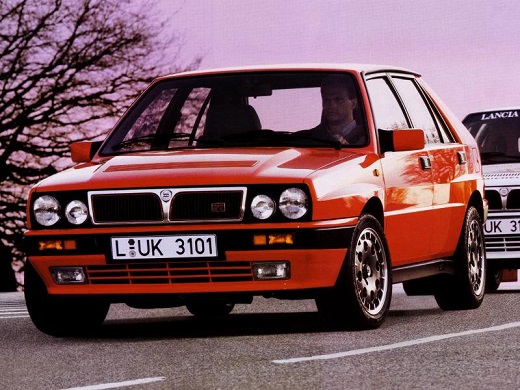
Lancia Delta
Visually, a slight elevation on the bonnet and wider arches around the wheels stand out, while on the mechanical side, ABS is installed for the first time. The distribution of the drive has changed, so that the ratio between the axles is 47:53. This solution made the Delta livelier and a bit more complicated to drive, despite the weight of 1,240 kg. It was not until 1991 that the offer of Delta versions was refreshed. There are 1.3L and 1.5L petrols on sale, in the standard one in the more luxurious version, in the 1.6L "athlete" in the GT a catalytic converter is installed and its power is reduced from 108 hp to 90 hp, as well as in the HF Turbo version, so instead of 140 hp, it now has 132 hp. The last examples of the two-wheel drive Delta came off the production lines in 1993, while only a year later, the production of the all-wheel drive Delta was definitely put to an end. October 1991, premiere of the first Delta HF Integrale Evolution. Fantastic looking with uniform double round headlights, even bigger coat of arms and slits on the hood, wider arches around the wheels, larger bumpers and lower sills. These were the last cars from the Evo I series needed for homologation to compete in the World Rally Championship.
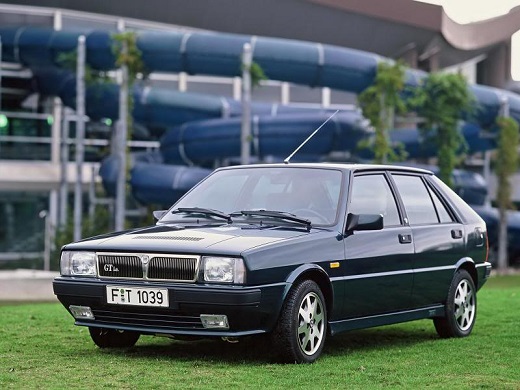
Lancia Delta
The later version with the catalytic converter never participated in the races. Alcantara's anatomically shaped Recaro seats were standard equipment, while interior leather and air conditioning, as with a racial sports car, were available for an extra charge. The 16 Lancia Delta HF Integrale 1993v Evoluzione II is the latest edition of the legendary car, not counting the special versions. The two-liter engine is fitted with a catalytic converter, multipoint injection and a new Garrett turbine to meet environmental requirements. 215hp and 314Nm of torque were already a regular occurrence in the early 1990s, but the attractive appearance, accentuated by interesting rims and tires of 205/45 ZR 16, still managed to attract customers. The second evolution of the Delta Integrale was not produced at Lancia's facilities, but was taken over by Maggiora. After assembly, the bodywork was sent to the Bertone plants, where the components were painted and finally assembled.
Lancia Delta is known to many car enthusiasts for its special editions, which today reach very interesting prices - even up to 200,000 euros. Of the extremely rare ones, we should also mention the Lancia Delta Evolution - Rosso Monza, Rosso Winner, Bianca, Nera, Blu Madras, Blu Lord, Verde Derby, Gialla Ferrari, Blu Zealand and Viola examples. The unique Delta Integrale Cabrio, which was once made for Giovanni Agnelli, is currently housed in the National Automobile Museum in Turin. In the period 1979-1993, a total of 483,162 Delta was produced, of which about 45,000 were in 4WD - Integrale - Evoluzione versions. Just before the end of production, the Dutch lover of classic cars, Paul Koot, in collaboration with the design house Zagato and Lancia, planned to make 500 coupes based on the Delta Integrale, under the name Hyena. The original idea was for the entire production to be done in Lancia's plants, but the Italian manufacturer gave up at the last minute, while Fiat, as the owner of Lancia, refused any further assistance on the project.
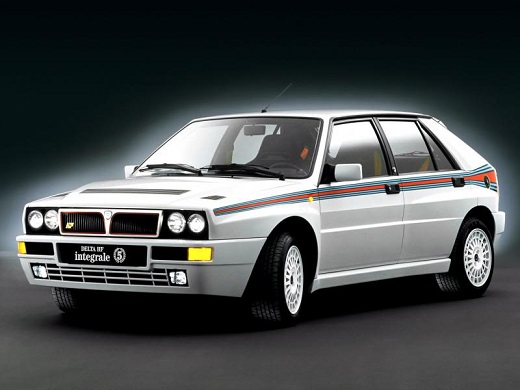
Lancia Delta
Only 24 copies reached customers willing to pay a high of $ 75,000. The Lancia Delta Integrale was transported naked to the Netherlands, where it was joined to the composite body. The final result of the work was a car 200 kg lighter than the model on which it was based, but also more powerful. With minor modifications, the engine reached 250 hp, while acceleration to 100 km / h was about five seconds, with a top speed of 230 km / h. Most of the Hyen produced ended up, somewhat unbelievably, in the hands of Japanese car collectors. The cooperation between Saab and Lancia launched the Saab-Lancia 1980 in Norway, Sweden, Denmark, Finland and Iceland in the early 600s. The Swedish manufacturer was on good terms with Fiat and some Italian models were sold through its sales network. such as the Lancia A112, i.e. Autobianchi. Cooperation on the 600 began as early as May 1980, and the Saab 600 was offered to customers as a replacement for the old Saab 96.

Lancia Delta
Only a 1.5L 85hp engine was offered, and customers were offered two packages of equipment. Suffice it to say that the whole odyssey with Scandinavian Italian ended in a fiasco. The car was only on sale until 1982, when much to the delight of hardcore Saab fans, it was withdrawn from sale. The reasons for the failure are many, starting with a price that was only a shade lower than the Saab 99. The build quality was not as expected, which is why many specimens with metallic paint began to peel after a year. The biggest problem with the engine was actually quite banal. To adapt the vehicle to colder driving conditions in the north, Saab engineers raised the thermostat temperature from 82 to 92 ºC. Ironically, the summer of 1980 was the hottest by then, causing the engines to overheat. The following year the problem was solved, adjusting to 82 ºC for the summer and 87 ºC for the winter, but by then it was too late for any changes. The subsequent collaboration of Saab and Lancia on the 9000 / Thema projects produced much better results.
A total of 6,419 copies were sold. The creation of the myth of the invincibility of Delta in rally competition began in late 1984 with the development of the S4 version. The successor to the Model 037 received a 1.8L engine for the Group B competition and a first-time dual-charge system - via compressor and turbine - delivering 400hp output. All the engine work is the work of the Abarth team, who had been preparing with Lancia for competitions for years. A year later, the power was increased to 450 hp at 8,000 rpm. In a compact and lightweight package, the Lancia Delta S4 has already won the first competition, the famous RAC rally, and in the following season, the Lancia Delta S4 recorded victories in three rallies - Monte Carlo, Argentina and Greece. A series of accidents at competitions, including the death of Henry Toivonen on the Lancia factory team, caused the speedy end of Group B and the shift of focus from unmanaged cars to something more civilized, in Group A.
The S4, after five victories, one of which has not been officially recognized, is giving way to the Delta HF 4WD. The sudden change in rules left many manufacturers without an adequate vehicle, which Lancia made great use of. In 1987, Lancia recorded nine victories in competitions, followed by ten victories in 11 competitions. In 1989, the Lancia Delta Integrale 8V wins the first six competitions and wins the title long before the end of the year. The following season saw the introduction of the Lancia Delta Integrale 16V, Lancia again recording six wins and a fight between Carlos Sainz and Juha Kankkunen raging until the last rally of the season. Kankkunen falls out of the fray in the crash, Sainz in Toyota takes first place, and Lancia wins another constructor title. In 1991, Lancia and Kankkunen win relays in Kenya, Argentina, Finland and Australia, while Didier Auriol wins at Sanrem. The fifth consecutive constructor competition title is secured with the driver competition title.
It was also the last season of the factory team involvement. Next season, the semi-private Jolly Club team, with the help of Martini, takes over Delta in the Integrale Evolution version from the factory team. With eight wins last season, and six consecutive titles in constructor competition, spear The Delta glitters in history. To date, no car has emerged that has won more than 46 rally wins, and there is little chance of this happening in the future.
Author: Hot Tires
Pictures: Lancia
Retrieved from: www.brzabrzina.com
Recommendation of similar texts:

Hi there, I am Mladen and I am an auto enthusiast. I started this blog years ago to help like minded people share information about latest cars, car servicing ideas, used car info, exotic cars, and auto technology. You will find helpful articles and videos on a wide variety of cars - Audi, Mercedes, Toyota, Porsche, Volvo, BMW and much more. Ping us if you have anything cool to share on latest cars or on how to make older cars more efficient, or just want to say hi!

